Amelia - Tattersall Gingham 120s Dress Shirt
-
 Guaranteed fit
Guaranteed fit
-
 100% Hand cut & sewn
100% Hand cut & sewn
-
 Delivery between
May 04 - May 07
Delivery between
May 04 - May 07
 Guaranteed fit
Guaranteed fit
 100% Hand cut & sewn
100% Hand cut & sewn
 Delivery between
May 04 - May 07
Delivery between
May 04 - May 07
2 Ply - 120 Thread Count
Egyptian Cotton by Soktas™
Poplin Weave
Light - Medium Weight
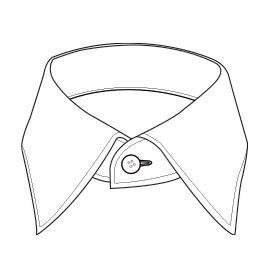
Longer point Italian collars are all the rage these days. A contemporary Italian classic that looks perfect with a blazer as the points tuck elegantly under the lapels with a perfect amount of spread.
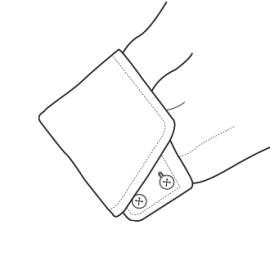
More commonly worn in Europe, the flowback like the French (also known as the cocktail, portofino, or 'James Bond' cuff) has contoured edges that fold back but are secured with dual buttons rather than cuff links. Our version was patterned to closely match the ones worn by Sean Connery in Thunderball and Dr. No.
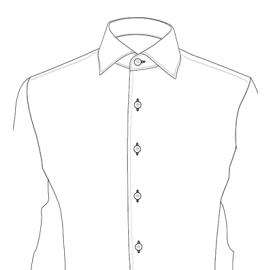
Material of shirt folded to the underside. Stitches are not shown, but are present on the underside. The edge of the shirt front is folded over to create a creased edge and held together by the button holes.
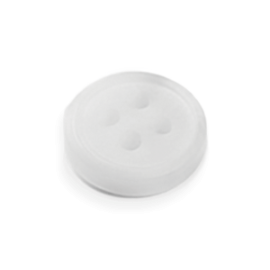
Standard buttons made from a translucent white resin that is extremely durable and break resistant. Darker fabrics are matched to darker buttons. 7/16” in diameter
The biggest risk when ordering a custom dress shirt sight unseen is the fit.
Our fit guarantee essentially eliminates the risk.
If for any reason your first shirt does not fit, we'll alter or remake it for you - regardless of fault.
To learn more about our fit policy click here
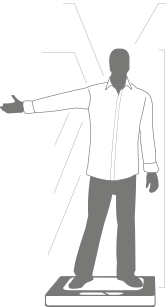
Collar size:
15"
Age: 80+
Height:
Slopping shoulders
Sleeve size:
35"
Pant waist:
30"
Jacket size:
45"
Traditional fit
Untucked
Weight:
150 lb
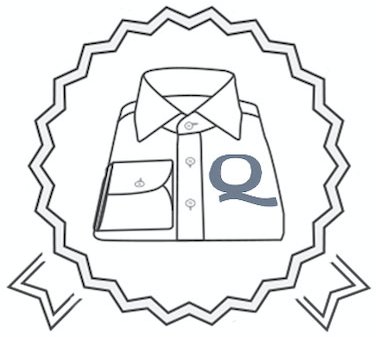
You’ve completed your QSize Profile!
A perfect fitting shirt is just a few clicks away!
Your calculated Qsize values
Measurements below represent your calculated, algorithm derived values. Please note, these are finished (shirt) measurements and not body measurements.
Collar
Value not specified
Sleeve
Value not specified
Chest
Value not specified
Waist
Value not specified
Bottom
Value not specified
Back
Value not specified
Sleeve width
Value not specified
Cuffs
Value not specified
Length
Value not specified
Next: Apply your qsize to one of our shirt design methods
Lay the shirt flat on it's back, remove any wrinkles, and measure from the center of the collar button to the furthest edge of the buttonhole.
Lay the sleeve flat on it's front and measure from the middle of the back (just beneath the collar) to the edge of the shoulder and then to the end of the cuff. If this is for a short sleeve shirt, please measure as described. Our tailors will determine the correct length if a short sleeve option is selected.
NOTE: If you are inputting a standard sleeve length from an existing shirt, PLEASE first measure as shown in the video. Sleeve sizes on off the rack shirts are commonly 1-1.5" larger than the listed size.
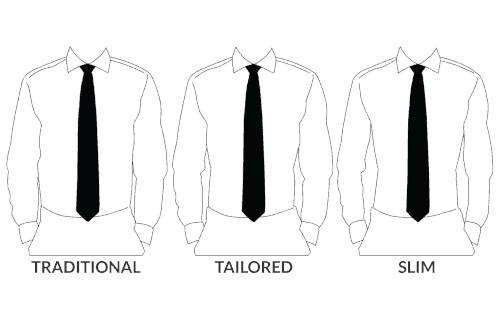
Traditional
Our fullest cut offering the most movement and draped loosely to the body. Worn primarily by big and tall men.
Tailored
Our most common cut, best suited for the majority of men. Fit is slightly tapered yet comfortable along the shirt body and arms.
Slim
The most tapered fit offered. Shirt body, shoulders, and arms are draped firmly to the body. Meant for those with broad shoulders and slimmer waists.
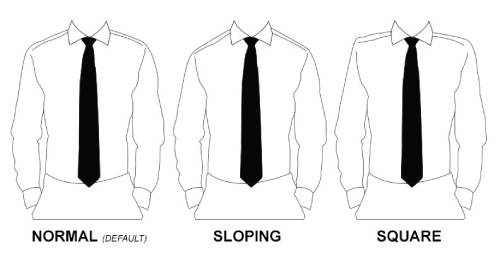
Normal (Default)
The majority of men fall into this category. You should not experience any fabric pulling or bunching with your existing off-the-rack shirts.
Sloping
Some men (weightlifters in particular) have a more pronounced angle / pitch in their shoulders which causes the fabric to stretch from the trapezoid to the lower chest, resulting in a pronounced pulling of the fabric.
Square
Men with very little angle / pitch in their shoulders will see lots of wrinkles / lines along the neck causing excess fabric to bunch up.

You’ve completed your Standard Profile!
A perfect fitting shirt is just a few clicks away!
Your calculated Standard values
Measurements below represent your calculated, algorithm derived values. Please note, these are finished (shirt) measurements and not body measurements.
Collar
Value not specified
Sleeve
Value not specified
Chest
Value not specified
Waist
Value not specified
Bottom
Value not specified
Back
Value not specified
Sleeve width
Value not specified
Cuffs
Value not specified
Length
Value not specified
Next: Apply your standard sizing to one of our shirt design methods
Lay the shirt flat on it's back, remove any wrinkles, and measure from the center of the collar button to the furthest edge of the buttonhole.
Lay the sleeve flat and measure from the top of the shoulder to the end of the cuff. If this is for a short sleeve shirt, measure to the desired length -- just beneath where the bicep lies is typically preferable.
Lay the shirt completely flat (buttoned), smooth out any wrinkles, and measure from one edge of underarm to the other.
Lay the shirt completely flat (buttoned), smooth out any wrinkles, and measure across the narrowest part of the shirt at the waistline.
Lay the shirt completely flat (buttoned), smooth out any wrinkles, and measure from one of the bottom hem seams to the other.
Lay the shirt completely flat (buttoned), smooth out any wrinkles, and measure from one edge of the shoulder to the other.
Lay the shirt completely flat (buttoned), smooth out any wrinkles, and measure from the top of the shoulder to the underarm / armpit.
Place the cuff on a flat surface and smooth out any wrinkles. Place the measuring tape on the outer edge of the button hole and measure across to the center of the button.
Lay the shirt completely flat (buttoned), smooth out any wrinkles, and measure from the the bottom of the collar band to the bottom of the shirt.

Normal (Default)
The majority of men fall into this category. You should not experience any fabric pulling or bunching with your existing off-the-rack shirts.
Sloping
Some men (weightlifters in particular) have a more pronounced angle / pitch in their shoulders which causes the fabric to stretch from the trapezoid to the lower chest, resulting in a pronounced pulling of the fabric.
Square
Men with very little angle / pitch in their shoulders will see lots of wrinkles / lines along the neck causing excess fabric to bunch up.

You’ve completed your Shirt Profile!
A perfect fitting shirt is just a few clicks away!
Your Shirt measurement values
These values can be edited by clicking view / edit profile button after closing popup.
Collar size
Value not specified
Sleeve
Value not specified
Chest
Value not specified
Waist
Value not specified
Bottom
Value not specified
Back
Value not specified
Sleeve width
Value not specified
Cuff
Value not specified
Length
Value not specified
Shoulders
Value not specified
Height
Value not specified
Weight
Value not specified
Next: Apply your shirt sizing to one of our shirt design methods
Measure around the lower portion of the neck (Just under the Adam's apple), where the collar usually sits. Allow two fingers to fit the gap between the tape and your neck.
With your arm at your side, measure from the tip of the shoulder to 1” below your wrist bone.
Perform this for each sleeve to account for any differences in length. If this is for a short sleeve shirt, measure to the desired length -- just beneath the bicep is typically preferable.
Measure around the upper (largest) portion of your chest, just under the armpits. Try to inhale when measuring this will ensure that your measurement account for your chest at its fullest.
Just above the belt line, measure around the fullest part of the waist.
NOTE: This measurement is almost always larger than your pant waist size.
Measure accross the back, from one edge of the shoulder to the other. Make sure that you take into account the curved contour of the shoulders (i.e. do not measure across in a straight line).
Measure from the base of the neck (where the shoulder meets your collar) to the desired length. Typically this is measured to the bottom of the fly on your pants for a tucked in shirt and mid-fly for an untucked shirt.
Measure around the fullest part of your hips, just below the hip bone.
Measure around the circumference of the largest part of your bicep. Let your arms rest at your side and do not flex your bicep.
Measure around your wrist (at the bone) where a watch would typically be worn. If you wear a large watch add 1/2 inch to the measurement.

Traditional
Our fullest cut offering the most movement and draped loosely to the body. Worn primarily by big and tall men.
Tailored
Our most common cut, best suited for the majority of men. Fit is slightly tapered yet comfortable along the shirt body and arms.
Slim
The most tapered fit offered. Shirt body, shoulders, and arms are draped firmly to the body. Meant for those with broad shoulders and slimmer waists.

Normal (Default)
The majority of men fall into this category. You should not experience any fabric pulling or bunching with your existing off-the-rack shirts.
Sloping
Some men (weightlifters in particular) have a more pronounced angle / pitch in their shoulders which causes the fabric to stretch from the trapezoid to the lower chest, resulting in a pronounced pulling of the fabric.
Square
Men with very little angle / pitch in their shoulders will see lots of wrinkles / lines along the neck causing excess fabric to bunch up.

You’ve completed your Body Profile!
A perfect fitting shirt is just a few clicks away!
Your Body measurement values
These values can be edited by clicking view / edit profile button after closing popup.
Collar size
Value not specified
Sleeve
Value not specified
Chest
Value not specified
Waist
Value not specified
Back
Value not specified
Length
Value not specified
Seat
Value not specified
Bicep
Value not specified
Wrist
Value not specified
Fit style
Value not specified
Shoulders
Value not specified
Height
Value not specified
Weight
Value not specified
Next: Apply your body sizing to one of our shirt design methods